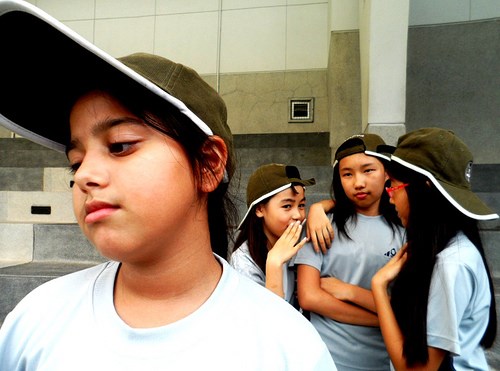Bullying Awareness Week took place Nov. 16-21 and with it, the province unveiled new anti-bullying initiatives and highlighted existing ones.
Last year, Jennifer Campeau, an MLA, was appointed Legislative Secretary responsible for the anti-bullying initiative in Saskatchewan. Campeau was tasked with developing an anti-bullying strategy and providing recommendations for the Minister of Education. She had province-wide consultations and looked at what was being done to combat bullying elsewhere, as well as other research, and came up with six recommendations for the province. Saskatchewan’s anti-bullying initiatives are all in response to these recommendations.
One recommendation was to develop an online reporting tool. The province did this by partnering with SaskTel for the “I Am Stronger” website, which gives students and adults access to anti-bullying resources and allows students to report bullying anonymously.
“It’s a one-stop shop for anti-bullying,” said Kevin Gabel, executive director of programs branch with the Government of Saskatchewan. “They didn’t want to have to go to five or seven different sites.”
As of last week, the site had 11,000 likes on Facebook, 13,000 public pledges by individuals to stand up for victims of bullying, and over 1,400 followers on Twitter.
The province also held its second anti-bullying forum in Saskatoon on Nov. 19, which was another recommendation by the province. Alec Couros, a former Humboldt resident who is now a professor at the University of Regina, was one of the main speakers.
“The main idea was to start thinking about a code of conduct that would ... get kids to think about the tremendous forces that are happening right now, especially on the digital spectrum,” he said.
Couros spoke about using technology responsibly and how to combat cyber bullying, which is important to address since cyber bullying is so different from bullying in the past.
“The difference today is digital is much more persistent and forever, versus bullying that goes away when you’re done with school,” he said. “There are new tools that can be used by bullies. It’s very hard to go home and forget about bullying because it’s pretty much everywhere you go.”
Couros thinks it’s important to accept that kids today are going to use technology and so it’s better to teach them how to use it responsibly rather than try to block their usage.
“We’ve seen a lot of districts block access to online tools,” he said. Since kids have access everywhere now and have unfettered access to the Internet, Couros says there needs to be a more realistic approach to teaching kids how to use the Internet in classrooms and at home. He has several recommendations for schools looking to improve youths’ relationship to technology.
First, to focus on filters being in one’s mind rather than in a router. Schools should teach kids to think about making wise choices about what they do online.
“We shouldn’t trust filters to block access to content. We should rely more on getting kids to make wise choices around Internet and content,” he said.
Second, have teachers and parents model responsible use of digital tools.
“It’s incredibly important to start thinking and developing your own use of these tools and model it for kids,” he said.
Third, for teachers and parents to spend time having fun and researching digital tools and not be afraid to look up Internet phenomena like memes or applications like snapchat.
“Try to get a sense of what kids are doing,” he advised.
And lastly, adults should encourage kids to do positive things with their online identities, such as participating in charitable movements like the ALS bucket challenge.
The Government of Saskatchewan isn’t just stopping at these initiatives. Gabel said they are always working with their partners to find out what else they can do (their partners right now include Kids Help Phone and Red Cross) and are looking to hone and improve their current programs.
“We’re a much more connected society now … due to that, I think people are more aware of what’s happening and are more aware of the pain that bullying causes for people, so we’re being more proactive,” Gabel said. “Each and every one of us, especially students, needs to feel safe and accepted in schools and communities.”




